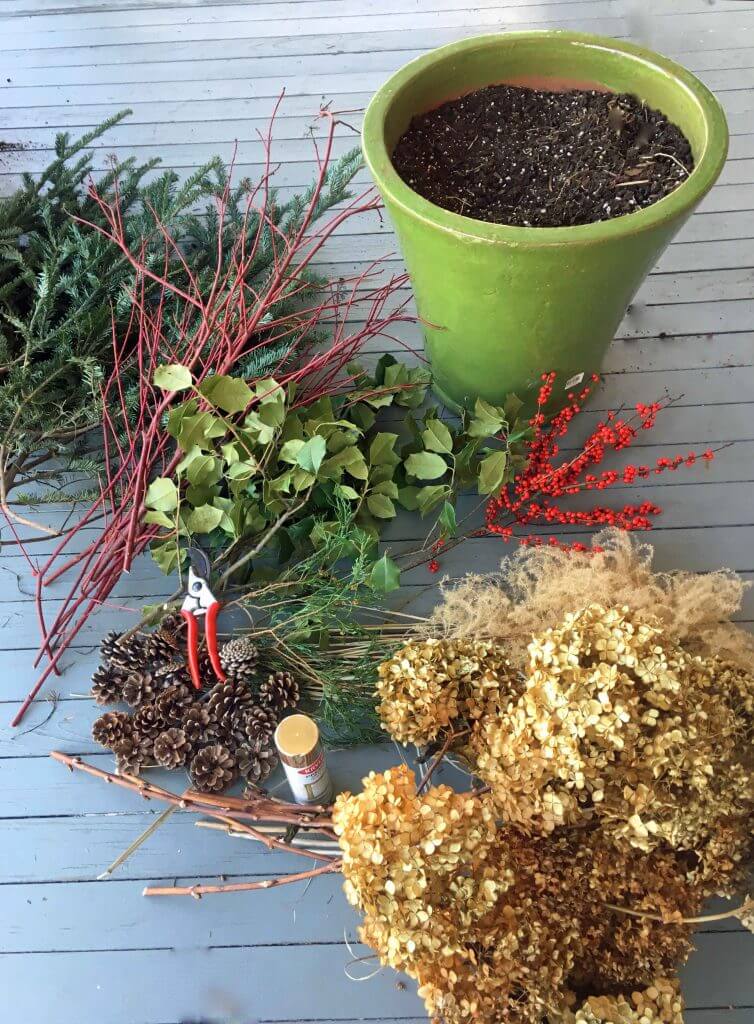
When flower-filled summer containers die back at the end of the season, don’t put those empty pots away. Convert your vacant outdoor planters into beautiful showpieces for the holidays. Take pruned evergreen and berried branches, dry grass plumes, and hydrangea blooms to make festive DIY outdoor holiday containers that will remain attractive well into winter.
Gathering Holiday Container Materials
Winter branches and dried flowers can be purchased, but it’s more cost-effective if you have these materials in your own landscape or garden. Pine, fir, or spruce branches are perfect for that touch of greenery. Holly and winterberry branches will add color and substance as will red twig dogwood or curly willow branches. If you have ornamental grasses with dried seed heads or dried hydrangea flowers, these add extra beauty, especially if given a little glitz with metallic spray paint. Finally, pine cones, magnolia seed heads, or sweet gum balls make excellent base decorations, so use them if you have them.
Directions

Creating these containers is no different than putting together a large winter bouquet, but instead of a vase, you use a planter with potting mix. Long branches make bolder showpieces with bigger impact, so start with branches that are at least 2-3 feet in length, and trim them as needed.
Your container composition will depend on the materials you have on hand, but this is the formula I use for one large container.
- A large planter filled with potting mix
- 6-8 large evergreen branches
- One large berried holly or winter berry branch
- 10 dried hydrangea and grass plumes
- 5 red twig dogwood branches (curly willow or other spray painted bare branches would work)
- Pine cones
- Gold or silver spray paint for the hydrangea plumes
- Pruners
Make sure your pot is filled with potting mix to support the branches. Place the pot in its final location before arranging; this will allow you to consider appearance and size as you craft the piece. If your container will be placed against a wall, set the showiest branches along the front.
Start by adding the greenery—placing the tallest branches towards the middle. Trim additional branches to place along the periphery. Next, add the colorful ornamental branches concentrically around the container. Set the berried branch in the center, and follow up by placing the dried hydrangea flowers along the edges. Add the grass plumes around the composition, and center one tall plume behind the berries. Nestle pine cones along the base and in the greenery or bare branches.







Create Your Own Container Design
These containers should reflect your personal style and home, so get creative and design your own. There are lots of things you can do to make them bigger, bolder, or more glittery. Adding stark but colorful branches in the center and surrounding them with greenery and pine cones creates a bold, attractive look. For added glitz, spiral some lights around each arrangement, embellish with a few glittery outdoor ornaments, or add a bright, colorful bow. It’s up to you!






